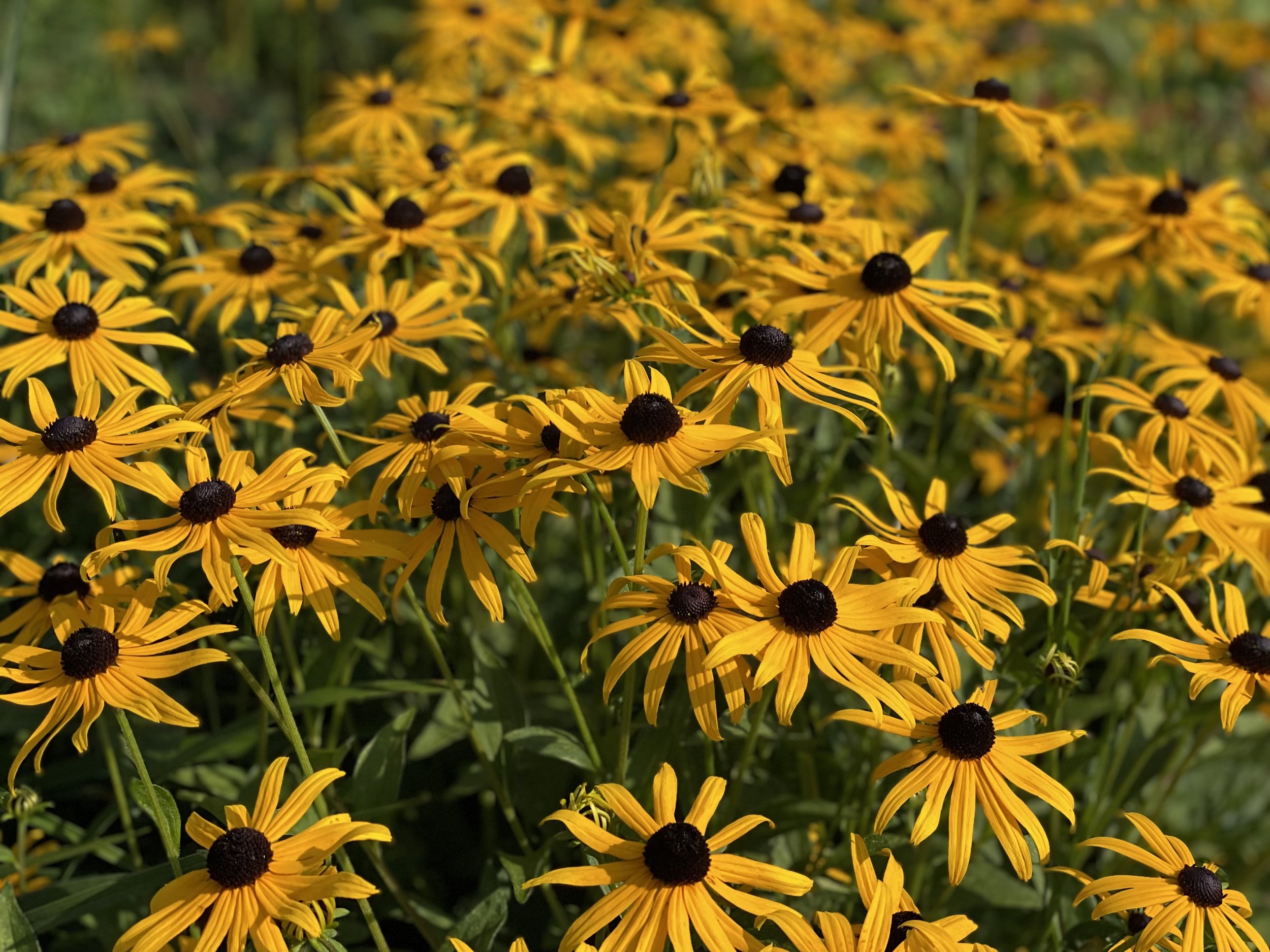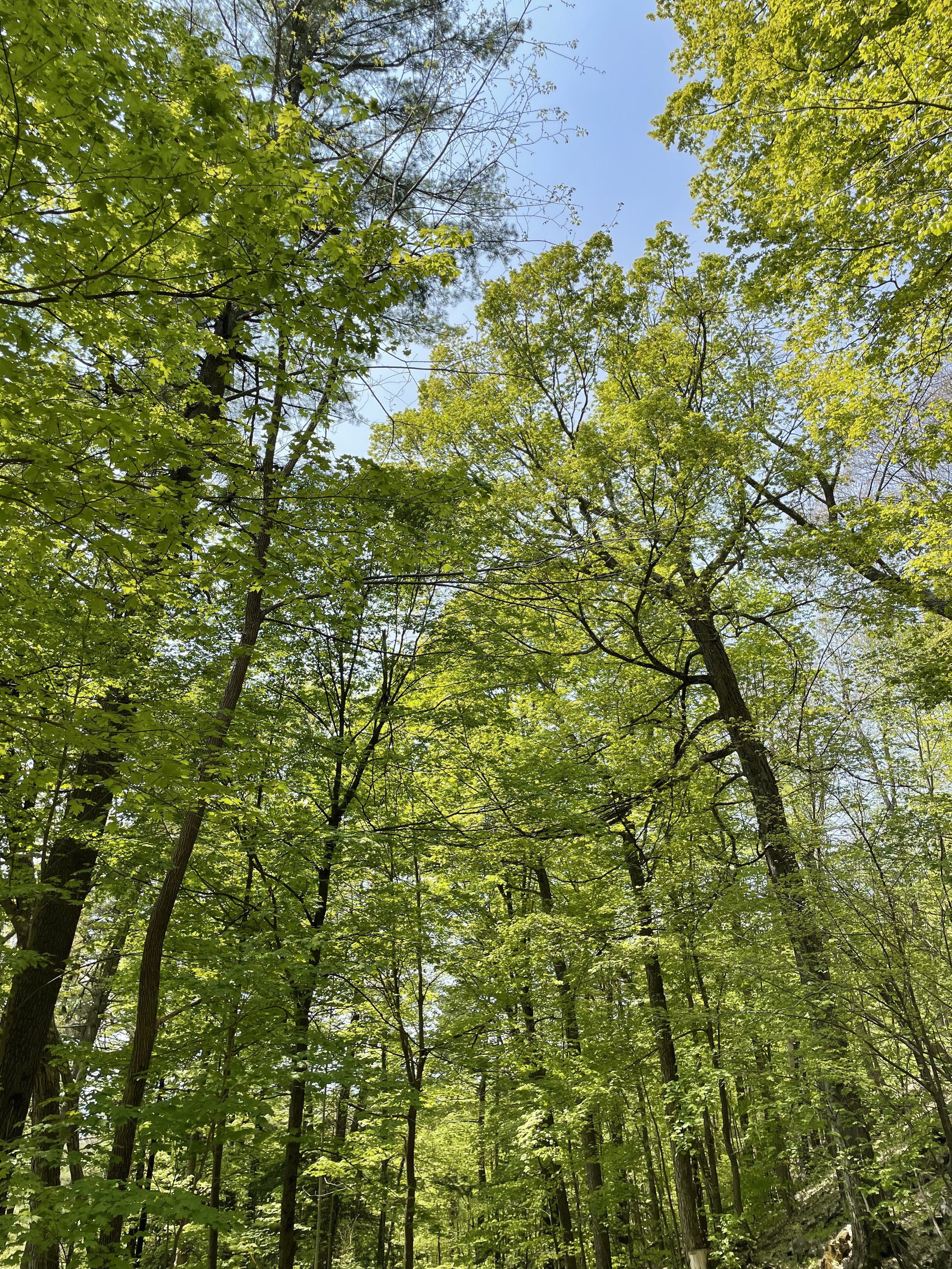I first heard about Forest Bathing several years ago when I visited the Minneapolis Landscape Arboretum with my sister, Sally. The Arboretum introduced the concept and practice of Forest Bathing to the twin cities. Since then, classes and experiences are offered regularly at the Minneapolis Arboretum led by David Motzenbecker, a landscape architect and certified Shinrin-yoku guide. I have wanted to experience it first-hand ever since.
Over the weekend I attended a Forest Bathing walk at Shelburne Farms in Shelburne, Vermont, led by Duncan Murdoch, a nature connection guide. The concept of Forest Bathing or shinrin-yoku originated in Japan in the 1980s and has spread all around the world. The purpose is both physiological and psychological and is a form of “ecotherapy,” designed to align us with natural rhythms, quiet our pre-occupied minds, bring us healing energy and into a flow state of mind. While Japan is credited with the term, the concept at the heart of the practice is not new. Many cultures and spiritual practices have long recognized the importance of the natural world to human health. Forest Bathing is not only a mindful walk in the woods, which it certainly is. It is a guided, reflective, focused time to connect to the natural world with all our senses and to share what we notice with others.
I arrived at the Farm Barn at Shelburne Farms where we were to meet our group at 9:00 a.m. for a three-hour guided Forest Bathing walk. I found around ten people gathered, locals from the Burlington area, a visiting Canadian couple, and four graduate school music students from New Hampshire. Duncan led us in a circle of gratitude to all the elements and creatures of this place and in introductions to each other. He explained that he would be offering invitations to us…followed by a period of silent exploration by each of us. At the end of the period, he would play his flute and whistle to signal us to gather, in a new location each time, to share our experiences if we chose to. The first invitation was to notice, “What is moving?”…as we walked wherever we wanted to go…into the woods, around the gardens, overlooking the farm. The second invitation was focused on sound… what did we hear? How did the sounds make a symphony around us? The third invitation was about touch. What happened if we allowed ourselves to walk barefoot? Or to touch the forest, garden, and meadow world with our hands? The last invitation was called, Sit Spot. We each sat in one place for an extended period to see what might happen around us or come to us.
We concluded our time together around a fire circle close to the edge of the forest. Duncan had brewed tea made of golden rod, stinging nettles, and red clover in a small metal Japanese tea pot. He wanted us to taste the landscape out of small ceramic cups as we shared our final thoughts. I have participated in many walking meditations. The focus is on breath and our steps and our feet and legs as we move slowly and appreciate movement and breath and our bodies moving through space. Forest Bathing shifts the focus to the senses. It is slow and quiet because to put your focus on one sense at a time requires this kind of attention. I was captivated by how enjoyable and timeless the morning became. I was mesmerized watching bees in the sunflower blossoms, listening to the corn stalks rustle in the breeze, stroking sugar maple leaves and Queen Anne’s lace, so soft like velvet, and watching the clouds slowly change form.
There were some tears at our closing circle. And gratitude and calm from all of us, all different ages and nationalities, having experienced the great woods and land of Shelburne Farms with so much attention.
Years ago, when I was a new teacher, I attended a weeklong workshop at the Vermont Institute of Natural Science and was taught how to Seton Watch… inspired by the practice of naturalist, Ernest Thompson Seton, we sat in one spot where we would not see anyone else, and quietly observed the world around us for about 20 minutes. I brought this practice back to the school where I was teaching and have remembered and practiced some form of it ever since. Forest Bathing is a more extended practice that is also fun and beneficial to bring to children and families.
During the morning when we were asked to focus on touch, Duncan invited us to bring back an object if we wanted to. I picked up the first red leaves I saw on the ground, a sugar maple and a red maple. I also picked up a fat, round acorn from a northern red oak. I brought these pieces of the morning home with me and began to think about another practice that I learned about last spring and introduced to my granddaughter, Delilah. Through following Margot Guralnick on Instagram, @dogwalkdiarynyc, I was introduced to collecting and composing bits and pieces of the natural world as a daily practice. Margot is a designer who takes a daily walk in her neighborhood of the Bronx, or wherever she finds herself. On her walk she collects leaves, twigs, seedpods, berries…whatever pieces of the natural world are available and that she is drawn to. Then, she arranges these pieces into compositions on the ground, or on a table, or any interesting surface and photographs them. She posts these photographs for all to see. She calls these compositions “daily devotionals,” “a daily meditation on and collaboration with the plant world.” She says that she is inspired by early botanicals and the roadside shrines in Greece and Mexico. Some might also call her work ephemeral art or environmental art.
Last spring, Delilah and I were lucky enough to meet Margot when she had a show at a small shop in Cambridge Massachusetts. Both Delilah and I loved the post cards and posters of Margot’s daily meditations. We purchased some to bring home, inspired to make our own. This is another form of being attentive to the natural world on walks wherever we are…like a treasure hunt. Different than forest bathing, but a related practice.
Margot Guralick, Delilah Cadwell, and Louise Cadwell at https://www.abroadmodern.com
When we lived in Reggio Emilia, Italy, I observed teachers of very young children taking slow walks in the park that surrounds the Diana School and picking up leaves and pods to bring inside. The teachers and children made collections of all sizes, shapes, and colors of leaves, seeds, and objects from the natural world. Then, they children were invited to imagine that they were the wind making arrangements of leaves on the earth . What would they do?
The Diana School, 1992
These practices…Forest Bathing, Seton Watching, daily devotional arrangements of pieces of the natural world…all invite us, as a curious friend or playmate, into relationship with the natural world.
If you want to pursue these ideas…read Your Guide to Forest Bathing (Expanded Edition): Experience the Healing Power of Nature, by M. Amos Clifford or find a Forest Bathing experience led by a guide near you. Follow Margo, @dogwalkdiarynyc, and make your own ephemeral compositions with friends and family.
One of the books I have on my bedside table, The Joy of Forest Bathing: Reconnect With Wild Places & Rejuvenate Your Life, by Melanie Chokes-Bradley, emphasizes how Forest Bathing is a year-round practice through all the seasons. I have not thought of it that way, and now I will. We invite you all to try this way of walking out into the natural world as the seasons change. We will be walking together.








